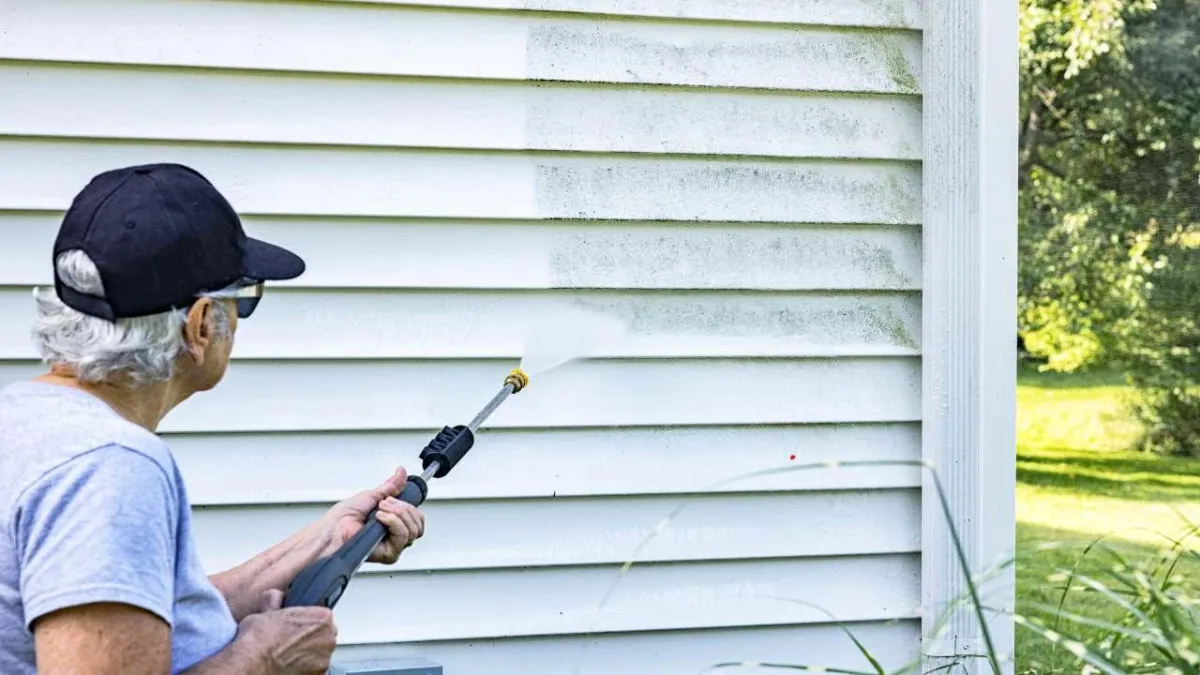
Power Washing Your Home: Tips for Brick, Wood, and Vinyl Exteriors
A fresh, clean exterior can completely transform how your home looks—and feels. Over time, dirt, mold, and grime build up on your walls, dulling even the most beautiful surfaces. Power washing is one of the most effective ways to bring that shine back. But before you turn on the pressure washer, it’s important to know that not all surfaces can handle the same treatment.
In this guide, you’ll learn how to safely and effectively clean brick, wood, and vinyl siding without causing damage. You’ll also discover when it’s best to call in the pros for house power washing in Massillon OH, like the trusted team at Wilhelm Painting & Power Washing, who know the right balance of pressure and cleaning solutions for every surface.
Understanding the Basics of Power Washing
Power washing uses high-pressure water to remove dirt, mildew, algae, and stains. It’s an excellent way to restore your home’s exterior, but it’s not a one-size-fits-all process. Each material—brick, wood, and vinyl—requires a specific approach.
Before starting, check your equipment’s pressure rating and nozzle type. Using too much pressure or the wrong nozzle can strip paint, crack siding, or erode mortar. Always test a small, hidden section first to make sure you’re using the right settings.
Power Washing Brick: Gentle Strength
Brick is tough, but it’s also porous. Over time, water, dirt, and moss can seep into cracks and mortar joints. To clean it properly:
Use a low-pressure setting to prevent mortar damage.
Apply a mild detergent designed for masonry and let it sit for 5–10 minutes.
Rinse with steady, even strokes, keeping the nozzle about a foot away from the surface.
Avoid using acidic cleaners—they can break down the mortar and lead to crumbling over time. After cleaning, check for any areas that might need repointing or sealing to keep moisture out.
Case Study:
A homeowner in Stark County recently hired a professional team to power wash their 1950s brick home. Years of mildew and discoloration were gone in one afternoon. After the cleaning, the brick’s original red tone returned, and the homeowner decided to seal it to maintain that freshly washed look for years.
Power Washing Wood: Handle with Care
Wood siding or decks need extra attention. Too much pressure can strip paint, gouge the surface, or cause splintering. To avoid damage:
Choose a fan-tip nozzle and keep pressure under 1,500 PSI.
Spray with the grain, never against it.
Use a wood-safe detergent and rinse thoroughly.
After cleaning, let the wood dry completely before staining or sealing. This step is key to preserving the wood’s natural beauty and preventing future moisture damage.
Power Washing Vinyl: Quick and Effective
Vinyl siding is relatively low maintenance, but it still collects grime, pollen, and algae. Here’s how to get it looking new again:
Use medium pressure and a 25–40° nozzle tip.
Apply a gentle detergent made for vinyl exteriors.
Rinse from top to bottom to avoid streaks.
Vinyl siding often hides mold in shaded areas, so pay special attention to those spots. If you notice persistent green or black stains, it may be time to call professionals who offer residential cleaning services to handle deep mildew removal safely.
When to Call the Pros
While DIY power washing can save money, it also comes with risk. Using too much pressure or the wrong cleaner can lead to costly repairs. Professionals like Wilhelm Painting & Power Washing have the right equipment, eco-friendly detergents, and experience to protect your home’s surfaces while delivering spotless results.
Final Thoughts
Power washing isn’t just about curb appeal—it’s about maintenance and protection. Regular cleaning prevents damage, extends the lifespan of your siding, and makes your home look cared for year-round. Whether you’re working on brick, wood, or vinyl, the right approach makes all the difference.
If you want to refresh your home safely and efficiently, schedule a professional power wash today.
